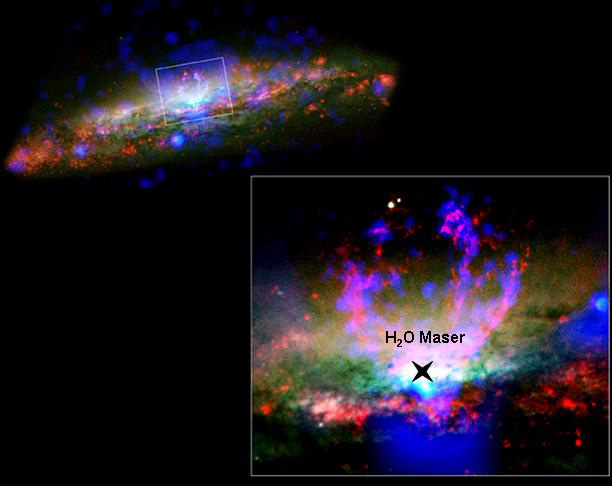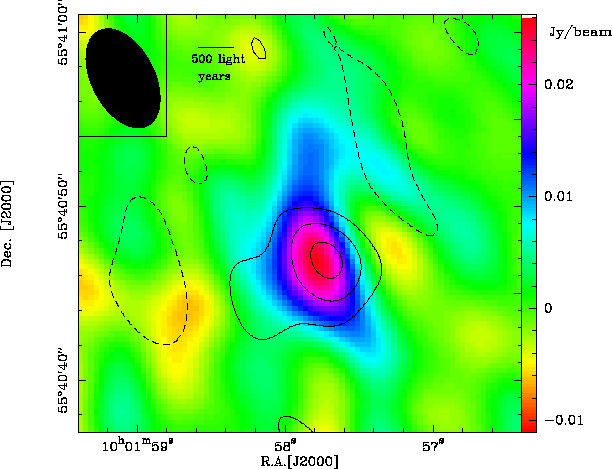Image List
-

A Chandra X-ray image (blue) has been combined with Hubble's optical image (red and green) to compose this stunning and revealing picture of the spiral galaxy NGC 3079. The location of the water maser studied with the SMA is marked on the inset. Towering filaments consisting of warm (about ten thousand degrees Celsius) and hot (about ten million degrees C) gas blend to create the bright horseshoe-shaped feature near the center. The correlation of the warm and hot filaments suggests that they were both formed as a superwind of gas rushed out from the galaxy's center. Such a superwind originates either from activity generated by a central supermassive black hole, or by a burst of supernova activity.
NASA/CXC/G. Cecil (UNC) -

The color contours at center show the warm dust emission at the nucleus of NGC 3079 detected using the Submillimeter Array. The black line contours overlaying the color contours show the newly detected 183 GHz H2O maser emission found at the nucleus also using the SMA. The maser emission is more than ten times stronger than that of the dust emission. The beam size of the SMA is represented by the black ellipse at upper left indicating the angular resolution of the observations. (The dotted lines are negative contours of the noise in the measurement.)
E. Humphreys (CfA)